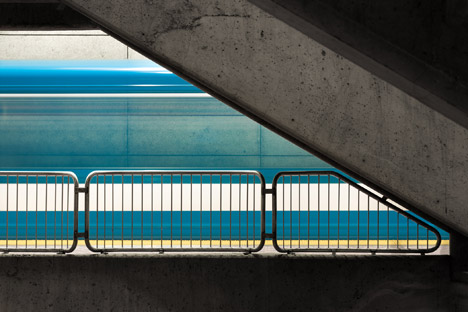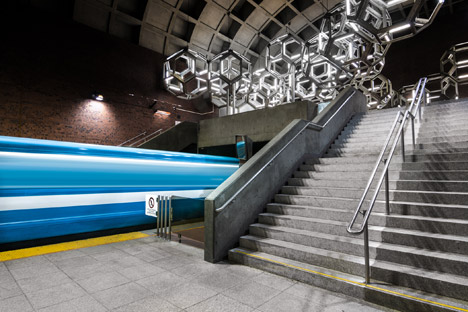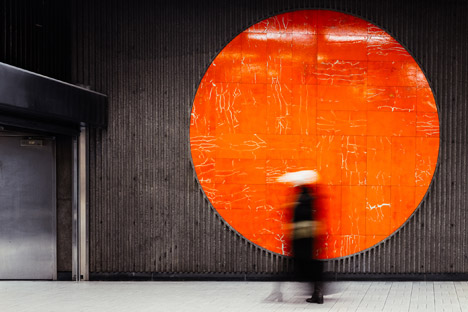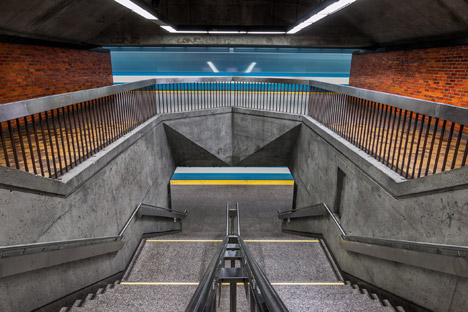Christopher Forsyth embarks on a project to document all of Montreal's metro stations
Photo essay: Canadian photographer Christopher Forsyth has spent the last seven months shooting the subterranean stations that make up Montreal's four-line metro system (+ slideshow).
The Montreal Metro is Canada's busiest metro system, with an average of 1,245,700 journeys taken every weekday. But Forsyth says most passengers barely notice the "beautiful design" of its 68 stations, many of which were completed in the 1960s.
In this essay written exclusively for Dezeen he describes his aim to document the spaces of all 68 and reveals the perils of being caught photographing travellers unawares.
The unique architecture, art, and design of Montreal's metro has been the focus of a photography series I have been developing since October 2014. The project aims to encourage Montrealers to see their metro in a new light and show people that beautiful design is all around us.

The construction of the metro system began in the 1960s under the direction of Montreal's mayor at the time, Jean Drapeau. He launched a competition inviting Canadian architects to design their own unique station. Art installations were then commissioned on a station-to-station basis.
Over time, the system grew to what it is today – a microcosm of architectural styles stretched across 68 stations.
Taking the metro almost daily to and from school for years, I began to familiarise myself with the stations. They grew on me. There was one station in particular that began my obsession – De La Savane.
A cement cavern with white dome lights, and lines cut into the concrete walls: the station is beautifully graphic and the light draws you to the metro platforms. It was the first station I photographed, with good reason.

I began sharing my photos on my Instagram using the hashtag #mtlmetroproject. Both Montrealers and visitors alike started to share their metro shots creating an archive of the many stations. It quickly became all I shot.
When travelling underground you lose your sense of time and distance. You can enter one station in a certain neighbourhood, hop on the metro for a few minutes, and find yourself totally disoriented in a completely different part of town. It's hard to understand where you are exactly and how point A and B are connected. I love the metro for that reason.
I enjoy getting lost and finding new corridors and trying to piece it all back together. I've spent days underground just taking photos of what I find.

After a while, you begin to look at the stations less like a commuter going from A to B and notice all the details in between: the ceilings, the walls, the tiling, the movement, and the flow. The way the metros circulate make for interesting photos too.
Over time, motion blur has become a standard of sorts when I look for a good photo. From the metro cars themselves to the flow of the escalators, movement makes for interesting imagery. As I introduced longer exposures to blur movement, people in my photos became less and less prominent.
Over time, huge empty stations became the face of my series – my own personal touch. It helped a lot, seeing as Quebec is the only Canadian province with laws in place against photographing people in public spaces. Not having permission from STM, the metro authority, to take photos, it is a lot easier if I avoid disturbing anyone in the first place. When I'm approached by an employee of the STM, I explain that I'm taking architecture photos devoid of people, and if they tell me to leave, I just move on to the next station.

As the series grows, I hope to one day cover all 68 stations. As stations are renovated and their appearances change, I strive to capture what they once were and what they are now.